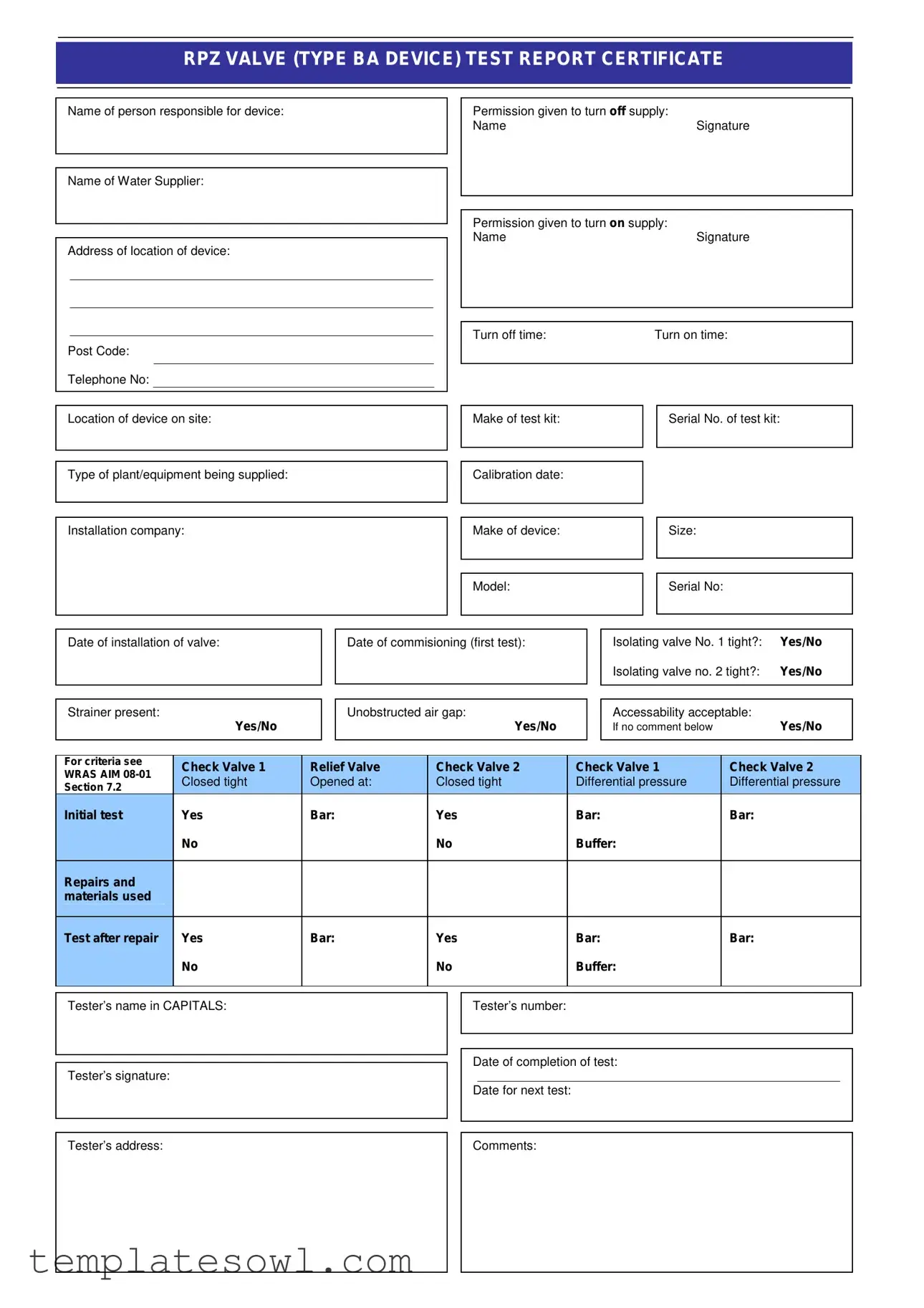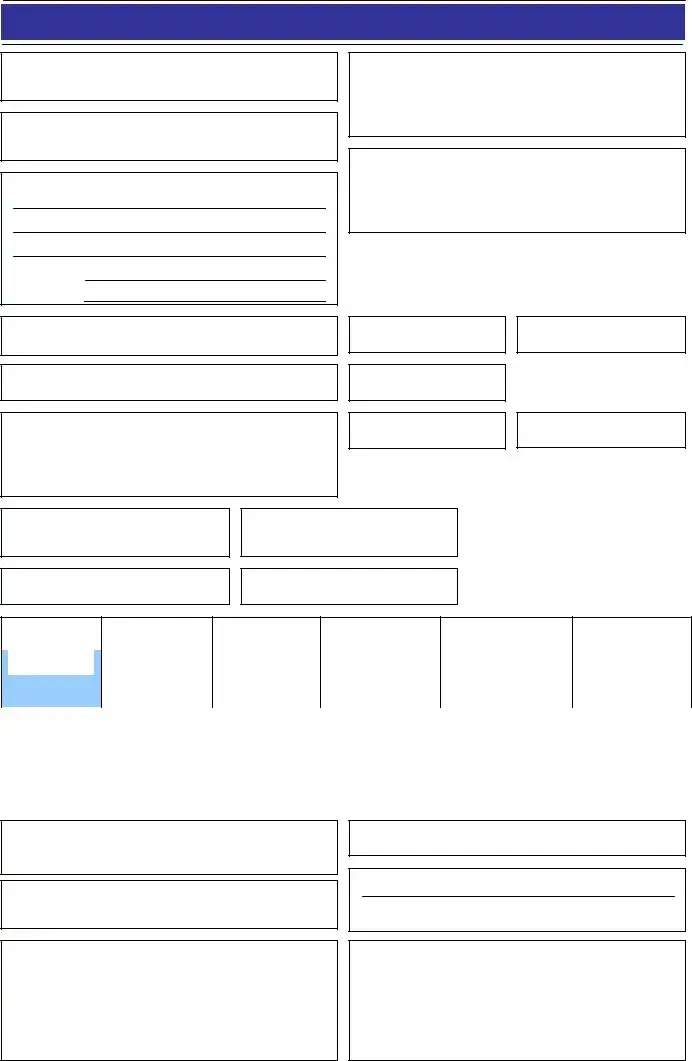What is the purpose of the RPZ Test Results form?
The RPZ Test Results form serves to document the test results of Reduced Pressure Zone (RPZ) valves. These valves are essential for ensuring safe and reliable water supply systems by preventing backflow and contamination. The form captures crucial details about the testing process, results, and responsible parties.
Who is responsible for filling out the RPZ Test Results form?
The form should be completed by a qualified tester who is certified to inspect and test RPZ devices. It requires input from both the testing individual and the water supplier, ensuring that all relevant information is accurately recorded.
What information is included in the form?
The RPZ Test Results form includes various details such as the responsible person's name, water supplier information, device location, installation details, test kit specifics, dates of installation and commissioning, and the outcomes of critical tests related to the RPZ valve's functionality.
How do I indicate permission for turning off the water supply?
Two sections in the form allow for this indication—one for permission to turn off and another for permission to turn on the supply. Each section requires the name and signature of the person granting permission, ensuring accountability.
What do the terms "closed tight" and "opened at" refer to in the test results?
"Closed tight" indicates that the valve properly seals to prevent any backflow. "Opened at" records the pressure at which the valve begins to release water safely. These readings are critical for evaluating the valve's performance during the test.
What should I do if an isolating valve is not tight?
If an isolating valve is not tight, this could indicate a potential issue that may compromise the safety of the water supply. The tester should note this in the comments section and take appropriate measures, which may include repairs or further assessments.
What is the significance of the unobstructed air gap?
An unobstructed air gap is crucial for the proper functioning of the RPZ valve. It prevents backflow by allowing air to enter the plumbing system, which prevents contaminants from being drawn into the clean water supply. The form records whether this air gap is appropriate.
How often should the RPZ valve be tested?
The next test date should be recorded on the form. Typically, RPZ valves require testing annually or based on the regulations of the local water authority. This ensures ongoing compliance and safety in the water supply system.
What details should be included in the comments section?
The comments section allows for any observations or additional notes related to the testing process or valve performance. This might include issues noted during the test, recommendations for repairs, or general observations about the equipment.
Who should keep a copy of the RPZ Test Results form?
Both the water supplier and the person responsible for the device should maintain copies of the RPZ Test Results form. This ensures that all parties have access to critical information regarding the valve's performance and compliance with safety regulations.

